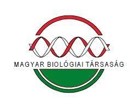Szárazságstressz hatása 22 árpafajta csíranövényeinek fotoszintetikus paramétereire
Absztrakt
A növények életműködéseiben jellemző változások fgyelhetők meg szárazság stressz esetén: a sztómák záródása következtében csökken a vízleadásuk, csökken a gyökér, később a hajtásnövekedés, a fotoszintetikus folyamatok is gátlódnak egyéb fziológiai változások mellett. A szárazságstressz következtében bekövetkező változások megismerésére 22 árpafajta és vonal csíranövényeit vizsgáltuk. A stresszhatást PEG (polietilén-glikol) 6000 20%-os oldatával, valamint kiszárítással értük el. A csíranövények fényhasznosításának 3 paraméterét, a fényhasznosítást (Fv/Fm), a hozamot (Y) és a nemfotokémiai kioltást (NPQ) klorofll-a fluoreszcencia imaging-PAM készülék segítségé- vel mértük. Kiszárítás hatására szignifkánsan csökkent mindhárom paraméter értéke, a fényhasznosítás átlagosan 16%-kal, a hozam 8%-kal, a nem-fotokémiai kioltás 94%-kal. Eredményeink alapján a vizsgált paraméterek alkalmasak lehetnek a fajták szárazsággal szembeni ellenállóságának megállapítására, akár már a fejlődésük korai szakaszában.
Hivatkozások
Aro E-M., Virgin I., Andersson B. 1993: Photoinhibition of photosystem II. Inactivation, protein damage and turnover. Biochimica et Biophysica Acta 1143: 113–134. http://dx.doi.org/10.1016/0005-2728(93)90134-2
Aro E-M., Suorsa M., Rokka A., Allahverdiyeva Y., Paakkarinen V., Saleem A., Battchikova N., Rintamäki E. 2005: Dynamics of photosystem II: a proteomic approach to thylakoid protein complexes. Journal of Experimental Botany 56 (411): 347–356. http://dx.doi.org/10.1093/jxb/eri041
Bączek-Kwinta R., Kozieł A., Seidler-Łożykowska K. 2011: Are the fluorescence parameters of German chamomile leaves the first indicators of the anthodia yield in drought conditions? Photosynthetica 49 (1): 87–97. http://dx.doi.org/10.1007/s11099-011-0013-3
Baker N. R. 2008: Chlorophyll fluorescence: A probe of photosynthesis in vivo. Annual Review of Plant Biology 59: 89–113. http://dx.doi.org/10.1146/annurev.arplant.59.032607.092759
Baker N.R., Rosenqvist E. 2004: Applications of chlorophyll fluorescence can improve crop production strategies: an examination of future possibilities. Journal of Experimental Botany 55 (403): 1607–1621. http://dx.doi.org/10.1093/jxb/erh196
Bálint A. F., Szira F., Galiba G., Jäger K., Fábián A., Barnabás B. 2009: Szárazságtűrési vizsgálatok gabonaféléken. In: Veisz O. (szerk.): A martonvásári agrárkutatások hatodik évtizede – Martonvásár 1949–2009. pp. 43–48.
Balouchi H. R. 2010: Screening wheat parents of mapping population for heat and drought tolerance, detection of wheat genetic variation. International Journal of Biology and Life Sciences 4(6): 56–66.
Calatayud A., Roca D., Martínez P. F. 2006: Spatial-temporal variations is rose leaves under water stress conditions studied by chlorophyll fluorescence imaging. Plant Physiology and Biochemistry 44(10): 564–573. http://dx.doi.org/10.1016/j.plaphy.2006.09.015
Chaves M. M., Flexas J., Pinheiro C. 2009: Photosynthesis under drought and salt stress: regulation mechanisms from whole plant to cell. Annals of Botany 103(4): 551–560. http://dx.doi.org/10.1093/aob/mcn125
Faria T., Silvério D., Breia E., Cabral R., Abadía A., Abadía J., Pereira J. S., Chaves M. M. 1998: Differences in the response of carbon assimilation to summer stress (water deficits, high light and temperature) in four Mediterranean tree species. Physiologia Plantarum 102: 419–428. http://dx.doi.org/10.1034/j.1399-3054.1998.1020310.x
Hassan I. A., 2006: Effects of water stress and high temperature on gas exchange and chlorophyll fluorescence in Triticum aestivum L. Photosynthetica 44(22): 312–315. http://dx.doi.org/10.1007/s11099-006-0024-7
Henson I. E., Jensen C. R., Turner N. C. 1989: Leaf gas exchange and water relations of lupins and wheat. III. Abscisic acid and drought-induced stomatal closure. Functional Plant Biology 16(5): 429–442. http://dx.doi.org/10.1071/pp9890429
Jäger K., Fábián A., Eitel G., Szabó L., Deák Cs., Barnabás B., Papp I. 2014: A morpho-physiological approach differentiates bread wheat cultivars of contrasting tolerance under cyclic water stress. Journal of Plant Physiology 171: 1256–1266. http://dx.doi.org/10.1016/j.jplph.2014.04.013
Jamieson P. D., Francis G. S., Wilson D. R., Martin R. J. 1995: Effects of water deficits on evapotranspiration from barley. Agricultural and Forest Meteorology 76: 41–58. http://dx.doi.org/10.1016/0168-1923(94)02214-5
Jamil M., Rehman S. U., Lee K. J., Kim J. M., Kim H. S., Rha E. S. 2007: Salinity reduced growth PS2 photochemistry and chlorophyll content in radish. Scientia Agricola 64(2): 111–118. http://dx.doi.org/10.1590/s0103-90162007000200002
Kerepesi I., Galiba G. 2000: Osmotic and salt stress-induced alteration in soluble carbohydrate content in wheat seedlings. Crop Science 40(2): 482–487. http://dx.doi.org/10.2135/cropsci2000.402482x
Khamssi N. N., Najaphy A. 2012: Comparison of photosynthetic components of wheat genotypes under rain-fed and irrigated conditions. Photochemistry and Photobiology 88(1): 76–80. http://dx.doi.org/10.1111/j.1751-1097.2011.01008.x
Mamnouie E., Fotouhi Ghazvini R., Esfahany M., Nakhoda B. 2006: The effects of water deficit on crop yield and the physiological characteristics of barley (Hordeum vulgare L.) varieties. Journal of Agricultural Science and Technology 8: 211–219.
Pálfai I. 2011: Aszályos évek az Alföldön 1931–2010 között, pp: 87–96, In: Rakonczai J. (szerk.): Környezeti változások és az Alföld. Nagyalföld Alapítvány Kötetei 7. Nagyalföld Alapítvány, Békéscsaba, 396 pp.
Rapacz M.; Kocieiniak J., Jurczyk B. 2010: Different patterns of physiological and molecular response to drought in seedlings of malt- and feed-type barleys (Hordeum vulgare). Journal of Agronomy and Crop Science 196(1): 9–19. http://dx.doi.org/10.1111/j.1439-037x.2009.00389.x
Shangguan Z. P.; Shao M. G.; Dyckmmans J. 2000: Effects of nitrogen nutrition and water deficit on net photosynthetic rate and chlorophyll fluorescence in winter wheat, Journal of Plant Physiology 156(1): 46–51. http://dx.doi.org/10.1016/s0176-1617(00)80271-0
Sinha N. C., Patil B. D. 2006: Screening of barley varieties for drought resistance. Plant Breeding 97(1): 13–19. http://dx.doi.org/10.1111/j.1439-0523.1986.tb01296.x
Skribanek A., Tomcsányi A. 2008: Sörárpafajták szárazságstressz reakciói. A Nyugat-magyarországi Egyetem Savaria Egyetemi Központ Tudományos Közleményei XVI. Természettudományok 11: 137–145.
Slavík, B. 1974: Methods of studying plant water relations. Springer-Verlag, Berlin.
Solti Á., Gáspár L., Mészáros I., Szigeti Z., Lévai L., Sárvári É. 2008: Impact of iron supply on the kinetics of recovery of photosynthesis in Cd-stressed poplar (Populus glauca). Annals of Botany 102: 771–782. http://dx.doi.org/10.1093/aob/mcn160
Stocker O. 1929: Vizsgálatok különböző termőhelyen nőtt növények vízhiányának nagyságáról. Erdészeti Kísérletek 31: 63–76.
Szira F., Bálint A. F., Börner A., Galiba G. 2008: Evaluation of drought-related traits and screening methods at different developmental stages in spring barley. Journal of Agronomy and Crop Science 194(5): 334–342. http://dx.doi.org/10.1111/j.1439-037x.2008.00330.x
Tang Y., Wen X., Lu Q., Yang Z., Cheng Z., Lu C. 2007: Heat stress induces an aggregation of the light-harvesting complex of photosystem II in spinach plants. Plant Physiology 143: 629–638. http://dx.doi.org/10.1104/pp.106.090712
Vaz J., Sharma P.K. 2011: Relationship between xanthophy cycle and non-photochemical quenching in rice (Oryza sativa L.) plants in response to light stress. Indian Journal of Experimental Biology 49: 60–67.
Zlatev Z. 2009: Drought-induced changes in chlorophyll fluorescence of young wheat plants. Biotechnology & Biotechnological Equipment 23(1): 437–441. http://dx.doi.org/10.1080/13102818.2009.10818458


















